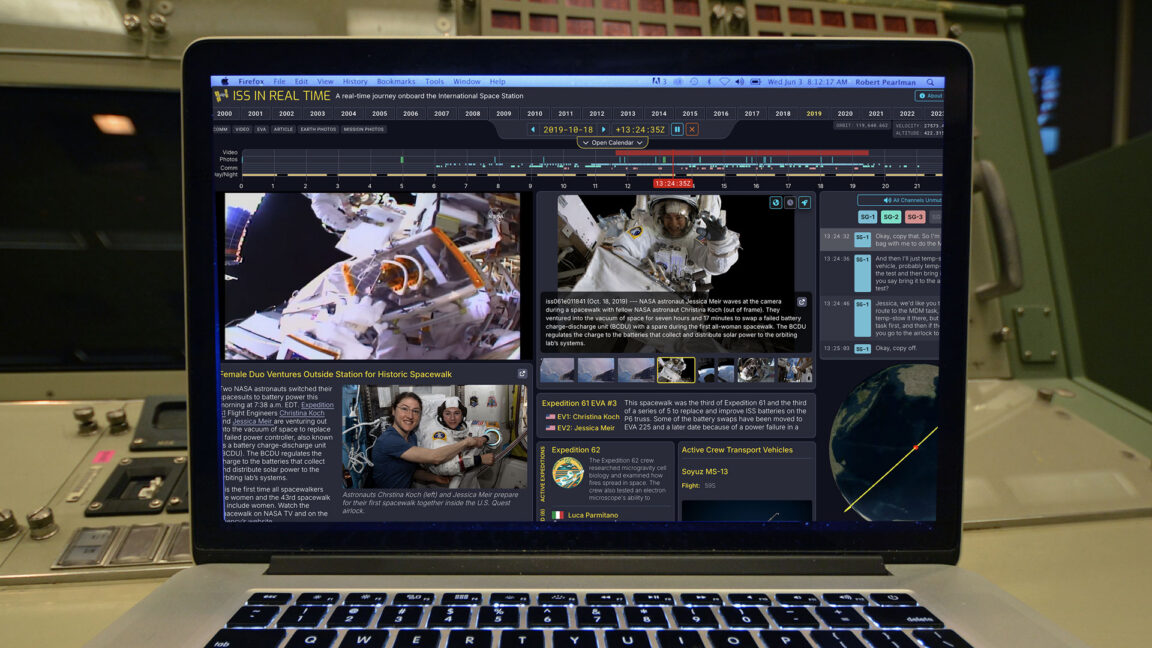
"If only there was a way to see, hear, and experience each of those 9,131 days. Fortunately, the astronauts and cosmonauts on the space station have devoted some of their work time and a lot of their free time to taking photos, filming videos, and calling down to Earth. Much of that data has been made available to the public, but in separate repositories, with no real way to correlate or connect it with the timeline on which it was all created."
"That is, not until now. Two NASA contractors, working only during their off hours, have built a portal into all of those resources to uniquely represent the 25-year history of ISS occupancy. ISS in Real Time, by Ben Feist and David Charney, went live on Monday (October 27), ahead of the November 2 anniversary. In its own way, the new website may be as impressive a software engineering accomplishment as the station is an aerospace engineering marvel."
""Everything that is on the website was already public. It's already on another website somewhere, with some of it tucked away in some format or another. What we did was a lot of scraping of that data, to get it pulled into the context of every day on the space station," said Feist in an interview with collectSPACE.com. As an info box on the front page of ISS in Real Time tallies,"
ISS in Real Time consolidates decades of station data into a day-by-day portal that links photos, videos, audio, mission records, and articles to specific dates. Two NASA contractors built the site by scraping public repositories and aligning disparate media with the station timeline. The site debuted ahead of the 25th continuous-occupancy anniversary and includes near-complete mission-day coverage, thousands of days with full space-to-ground audio, millions of comm calls and photos, and thousands of articles. The portal enables searching, correlated context, and immersive access to long-term human presence aboard the International Space Station.
Read at Ars Technica
Unable to calculate read time
Collection
[
|
...
]